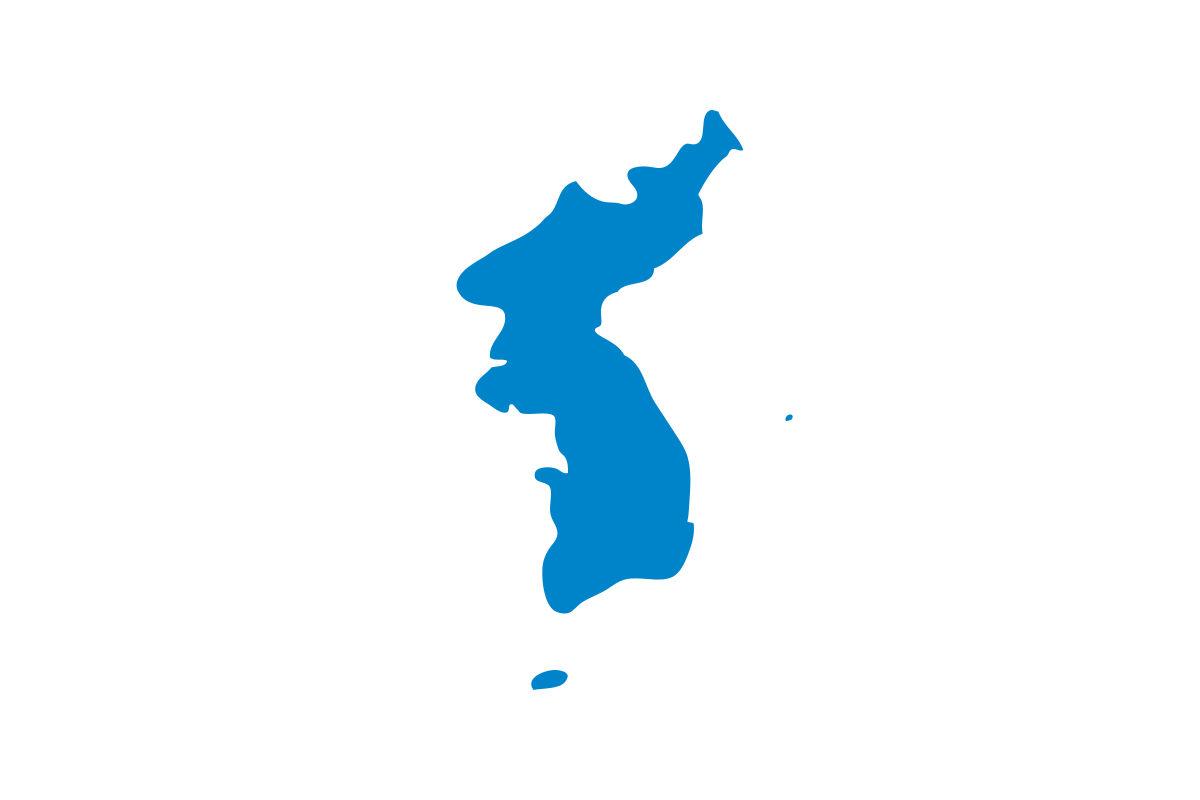Proportion 2:3 | ||
 | ||
The Unification Flag is a flag designed to represent all of Korea when North and South Korea participate as one team in sporting events. The flag represents a united Korea (both North and South). The background is white. In the center there is a blue silhouette of the Korean peninsula, including the island of Jeju-do to the southwest and Ulleungdo and Dokdo to the east, added in 2006. The flag has no status as an official flag in either country.
Contents
Use in field of sport
The flag was first used in 1991 when the two countries competed as a single team in the 41st World Table Tennis Championships in Chiba, Japan and the 8th World Youth Football Championship in Lisbon, Portugal. The two countries' teams marched together under the flag in the opening ceremonies of the 2000 Summer Olympics in Sydney, Australia; the 2002 Asian Games in Busan, South Korea; the 2003 Summer Universiade in Daegu, South Korea; the 2004 Summer Olympics in Athens, Greece; the 2006 Winter Olympics in Turin, Italy; and the 2006 Asian Games in Doha, Qatar; however, the two countries competed separately in sporting events. The flag was not used in the 2008 Summer Olympics in Beijing, China. Not only was a unified team shelved, even Beijing Olympics Organization Committee (BOCOG)'s plan to make the two Korean teams turn up back to back during the opening ceremony was rejected due to opposition by the North Korean delegation at the last moment. The two countries also marched separately at the 2012 Summer Olympics in London. North Korea did not participate in the 2014 Winter Olympics in Sochi, Russia. At the opening ceremony at the 2016 Summer Olympics in Rio de Janeiro, Brazil, the two teams marched separately, continuing the uninterrupted tradition since 2008 Olympics.
Use in other contexts
Other occasions on which the flag were used include the following:
